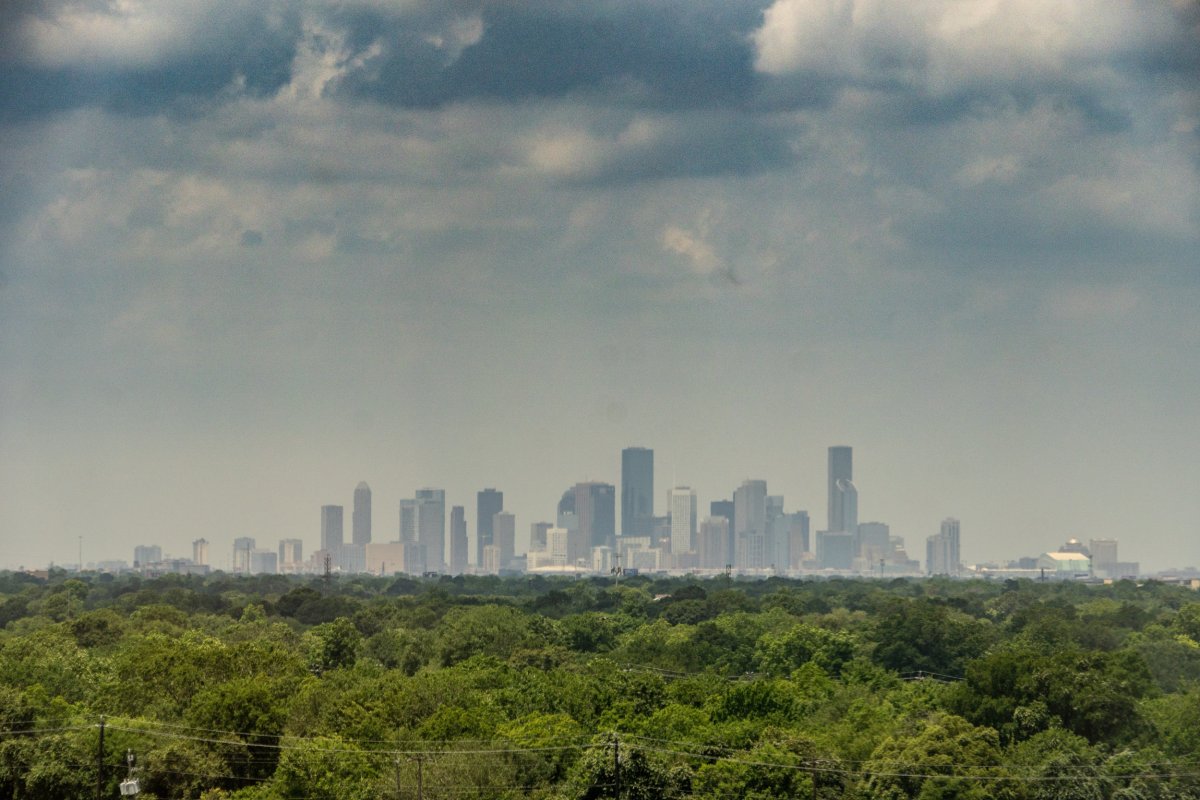Nearly 1 million children in Texas have been advised to limit outdoor activity on Saturday as major urban areas brace for potentially unhealthy air conditions. An air quality forecast from the Environmental Protection Agency (EPA) shows large portions of the state, including Houston, El Paso, and Austin, falling into the “orange” zone, signaling pollution levels that are “unhealthy for sensitive groups.”
Why It Matters
Health officials define sensitive groups to include children, older adults, and individuals with preexisting respiratory conditions. The latest data from the U.S. Census shows the combined population of children under 18 in Houston and Austin exceeds 780,000. El Paso also is expecting air quality into the “orange zone.” U.S. Census data anticipates there are approximately 169,000 children under 18 in El Paso.
Children are especially vulnerable to ozone pollution, which forms when nitrogen oxides and volatile organic compounds react in sunlight. The resulting ground-level ozone can trigger a range of health issues, including coughing, wheezing, and difficulty breathing, even in otherwise healthy children. For those with asthma, the consequences can be more severe.
What to Know
The Texas Commission on Environmental Quality (TCEQ) has issued Ozone Action Day alerts for April 12 across several major metropolitan areas, including Houston, Dallas-Fort Worth, Austin, and San Antonio. These alerts are triggered when ozone levels are expected to exceed 100 on the EPA’s Air Quality Index (AQI), crossing into the “unhealthy for sensitive groups” range.
These conditions are especially concerning for school-aged children, who typically spend time outside during recess or sports activities. The EPA recommends reducing physical activity outdoors during orange air quality days.
Ozone action day alerts are only indicative of forecasts and a TCEQ spokesperson told Newsweek that it doesn’t necessarily mean the air quality is actually poor.

ReDunnLev/Getty
In the days leading up to Saturday’s forecast, several regions in Texas already experienced similar air quality concerns. On April 9, the TCEQ issued an Ozone Action Day for the Houston, Galveston, and Brazoria areas, urging millions of residents to reduce emissions by avoiding drive-thru lanes and limiting driving during peak sunlight hours.
A day later, on April 10, the TCEQ extended ozone pollution alerts to include four of the state’s largest metro areas—Houston, Dallas-Fort Worth, Austin, and San Antonio—citing atmospheric conditions conducive to elevated ozone levels, including strong sunlight, high temperatures, and light wind.
AirNow’s forecast for Saturday also anticipates air quality reaching the “orange” category for parts of Southern New Mexico.
What People Are Saying
A TCEQ spokesperson told Newsweek: “A personal decision to limit outdoor activities should consider more than ozone levels because there are other conditions that can increase health risks, such as high heat and humidity.”
Meteorologist Brandon Buckingham previously told Newsweek: “Ozone is a secondary pollutant, meaning it’s not emitted directly from sources but is formed through chemical reactions. These reactions require sunlight and higher temperatures, making warmer months more prone to ozone formation. When air is stagnant, pollutants don’t get dispersed, allowing ozone to build up to unhealthy levels.”
What Happens Next
TCEQ expects air quality to improve by Sunday. The EPA and TCEQ will continue to monitor real-time air quality across Texas through Friday and into the weekend. Residents can track conditions via AirNow.gov.




